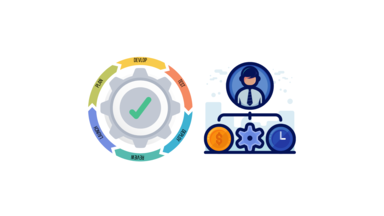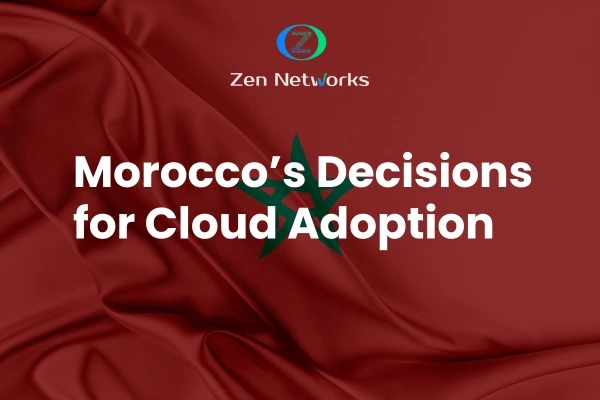ITIL V3 Usage in Change Management
To remain competitive in the quickly evolving business world of today, the capacity to manage change is crucial. Change management, which entails monitoring the recording, evaluation, authorisation, prioritization, planning, testing, implementation, documentation, and review of changes, is one strategy for bringing about change at various levels of an organization. A procedure inside the ITIL framework called ITIL V3 change management aids organizations in controlling and anticipating changes to their IT infrastructure, applications, and services.
What is ITIL V3 Change Management?
Change request management, change assessment, change authorization, change planning, change implementation, change review, and change closure are just a few of the essential activities that make up ITIL V3 change management. These procedures, which are part of ITIL V3‘s systematic approach to change management, can aid organizations in managing changes more successfully and effectively.
- Change request management entails gathering and documenting requests for modifications to the IT environment and assessing such requests to see if they are practical and in line with the strategic objectives of the organization.
- Change evaluation include determining how proposed changes might affect the business, as well as the resources needed, potential risks and advantages, and how they might affect other IT services and procedures.
- Change permission entails getting the go-ahead from pertinent parties, such business owners and IT managers, before making changes.
- Change planning is creating a thorough strategy for putting the change into action, outlining the required materials, dates, and channels for communication and training.
- Implementing changes to the IT environment, such as updating software, setting hardware, or changing procedures, is known as change implementation.
- Reviewing a change after it has been implemented to make sure it was successful and that any problems were fixed is known as a change review.
- Updated documentation, information archiving, and the closure of the change request are all included in the change closure process.
Using ITIL V3 in Change Management
ITIL V3 Change management is an essential component of IT service management because it entails managing changes in such a manner that risks and interruptions to the company are minimized while the benefits of the change are maximized. According to ITIL V3, a service change is any addition (installation), alteration, or removal of something that affects IT services. Change management spans all aspects of the Service Lifecycle, making it a critical and fascinating task. Well managed changes make planning easier, and there is less likelihood of service disruption and/or rework.
Each authorized and delivered software CI or software version must be stored in a Definitive Media Library in ITIL V3 Change Management (DML). A Definitive Media Library is a logical storage area for all approved software installs, as well as documentation on build, version, and release dates.
Service Asset and Configuration Management
It is critical to identify the assets that are presently being utilized to offer the service before implementing any form of change management. ITIL V3 defines assets as everything that can help with the delivery of a service. Asset management entails both inventory monitoring and reporting as well as ownership (who is responsible for the control).
A configuration item is a component that must be handled in order to deliver a service (CI). IT services, hardware, software, real estate, staff, records, and SLAs are common components of CIs. The information about the CI is added to the Configuration Record in the Configuration Management System. Configuration Management involves the production and maintenance of data about CIs and their relationships, which is stored in the Configuration Management Database (CMDB)
ITIL V3 Change Management and ITIL
ITIL and ITIL V3 Change Management are inextricably linked since ITIL V3 is a component of ITIL’s best practices framework. ITIL V3 Change Management is incorporated into the Service Transition phase of the ITIL Service Lifecycle, which includes a methodology for managing IT infrastructure modifications and releases. The procedure guarantees that changes are implemented in a controlled and predictable way, with least disturbance to the business.
ISO 20000 & ITIL
ISO 20000 is an international IT service management standard (ITSM). It provides a framework for managing and providing IT services to customers and businesses. The standard focuses on IT service management and provides a collection of standards and principles for IT service planning, design, delivery, and improvement.
ISO 20000 is closely connected to ITIL since it is built on ITIL best practices and is frequently used with ITIL. The standard is intended to assist enterprises in more successfully implementing ITIL procedures and managing their IT services.
ISO 20000 gives recommendations on how to plan, execute, and manage changes to IT services in the context of change management. Organizations must develop a systematic change management process that includes processes for analyzing the effect of proposed changes, gaining consent from key stakeholders, and testing and implementing changes in a controlled way, according to the standard.
ISO 20000 also mandates enterprises to have a configuration management system to identify and track the status of all configuration items (CIs) needed to provide IT services. This is analogous to the ITIL configuration management process, which focuses on identifying, regulating, and tracking the state of CIs throughout their lifespan.
Organizations may create a complete framework for managing IT services that encompasses change management, configuration management, and other critical activities by combining ISO 20000 with ITIL. This can assist companies in ensuring that changes are executed in a controlled and predictable way, hence reducing the risks associated with change. Furthermore, because ISO 20000 is recognized by regulatory agencies all around the world, it may assist firms in meeting regulatory and compliance obligations.
To summarize
ITIL V3 Change Management is a systematic strategy that may assist businesses in managing changes more effectively and efficiently, avoiding business risks and interruptions while optimizing the benefits of the change. Organizations may guarantee that changes are executed in a controlled and predictable way while reducing the risks associated with change by following the processes provided in ITIL V3 Change Management. The Management of Service Assets and Configurations is an important part of change management that involves monitoring and reporting on asset and configuration inventories. Overall, ITIL V3 Change Management is an important component of IT service management that may assist firms in staying up to date with market trends and adapting to the fast-paced external business environment.
Zen Networks is a leading provider of advanced IT solutions, specializing in log monitoring, automation and DevOps.
Our expert team offers a wide range of services, including IT monitoring, cloud services, agile solutions, and automation. We are also well-versed in the installation and implementation of Elasticsearch, Logstask, and Kibana on Docker.
By leveraging our extensive domain expertise and innovative technologies, we empower our clients to optimize their IT infrastructure and achieve operational excellence. Our solutions are designed to help organizations of all sizes to streamline their processes, improve efficiency, and reduce costs.
We invite you to take advantage of our complimentary consultation and quote service to learn more about how we can help your organization to achieve its IT goals. Contact us now to schedule your consultation and discover the benefits of working with Zen Networks.
Author






